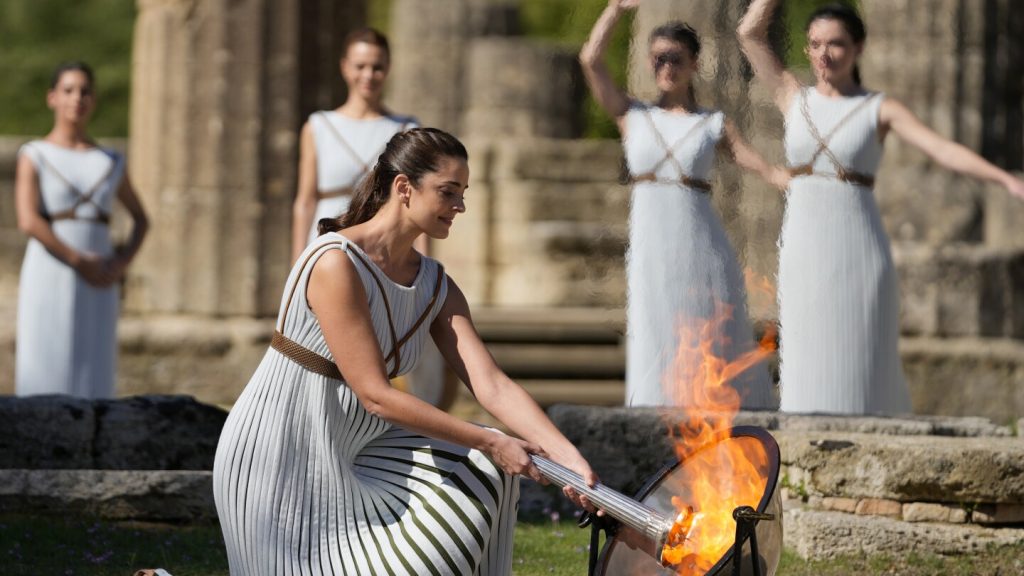In Ancient Olympia, Greece, the flame for the summer’s Paris Olympics was lit in a traditional ceremony. The flame will be carried through Greece for over 5,000 kilometers before being handed over to French organizers in Athens. This ceremony has been a part of every Olympics for nearly 90 years, creating a link between the modern event and the ancient Greek original.
The flame is lit by an actor playing an ancient Greek priestess using a mirror to focus the sun’s rays onto a torch containing combustible materials. The ceremony takes place in front of the temple of Hera, wife of Zeus. Once lit, the flame is used to light the first runner’s torch, which leads to a long relay through Greece before the handover in Athens on April 26.
The idea of the elaborate flame lighting ceremony was born out of Greek-German cooperation before the 1936 Olympics in Berlin. It aimed to blend the ancient games with the modern revival and included a torch relay to Berlin. While the ancient games did not have such ceremonies, the modern Olympics have evolved to include symbolic gestures like the flame lighting and torch relay.
The ancient Greek games, which started in 776 B.C., honored Zeus and included events like running, wrestling, and horse racing. The games continued until Christian authorities banned them in A.D. 393 as part of the pagan past. In modern times, potential disruptions to the ceremony, like rain or protests, can pose challenges to the organizers.
Protests have disrupted the flame-lighting ceremony in the past, but organizers have taken measures to address potential issues. Rehearsals are held before the official lighting, and there are backup plans in case of cloudy skies. The route of the torch relay through Greece is also a potential target for protests, leading to changes in the relay format after incidents in 2008.
While the flame-lighting ceremony is a symbolic tradition, there have been instances where the flame went out during the relay due to weather conditions. Quick fixes like using lighters have been employed in the past to keep the flame alive. Despite these challenges, the flame lighting at Ancient Olympia remains a significant and symbolic part of the Olympic Games.


